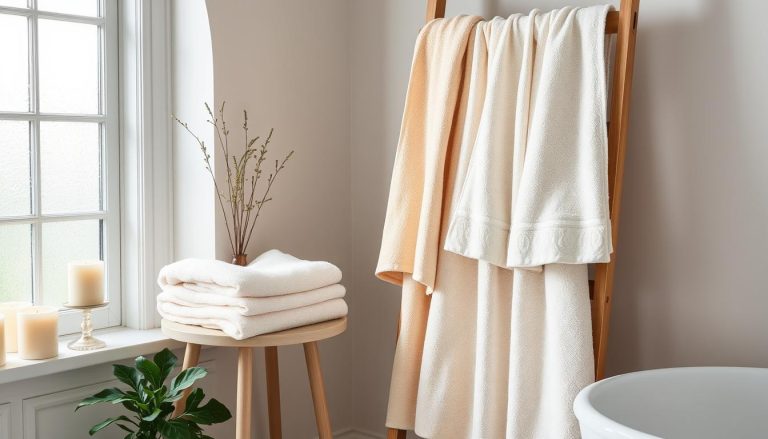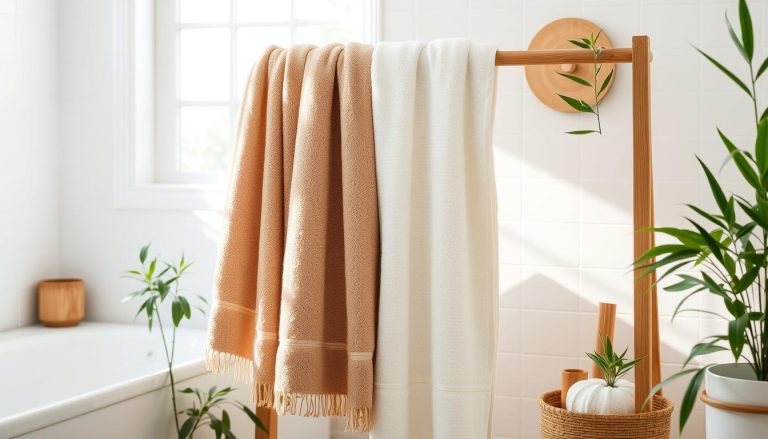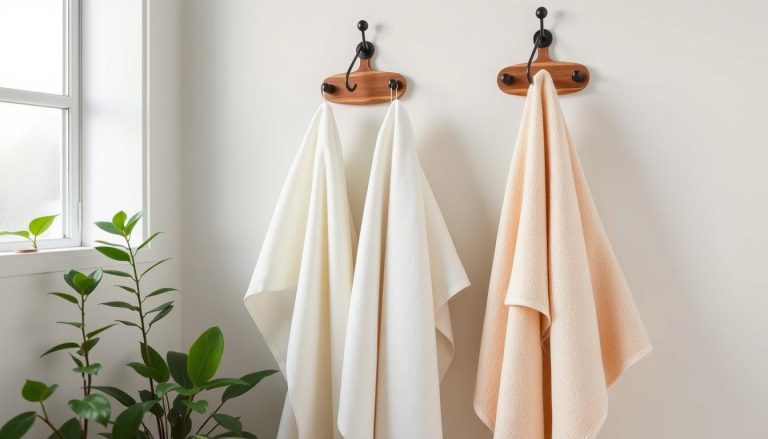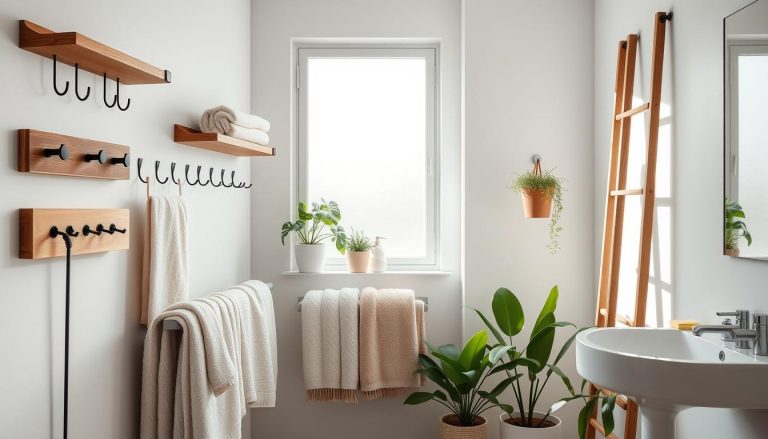Explore the Fascinating History of Bath Towels and How They’ve Evolved Over Time
houseremodelingnews.com may earn a commission if you purchase a product through one of our links
Ever thought about the bath towel’s long journey? It spans from ancient times to today’s innovations. The history of bath towels is a story of how textiles and cultures have changed.
Every day, you likely use a soft towel after showering. But did you know towels have a long history? They’re linked to how we clean ourselves and how we make fabrics.
The ancient Egyptians were the first to use linen towels. This started the tradition of towels we use today. As societies grew, so did the materials and ways to make towels. The Industrial Revolution brought terry cloth, making towels soft and absorbent.
Now, towels come in many materials, like cotton and bamboo. Over time, towels have become more than just for drying. They’ve become symbols of comfort and luxury. Learning about bath towels’ history helps us appreciate this everyday item more.
Key Takeaways
- Ancient Egyptians used linen cloths for bathing, laying the foundation for modern towels
- Terry cloth, invented during the Industrial Revolution, revolutionized towel production
- Turkey, especially the city of Bursa, is credited with inventing towels in the 15th century
- Bath towels have evolved from simple drying cloths to symbols of comfort and luxury
- Modern towels are made from various materials, including cotton, bamboo, and microfiber
- The history of bath towels reflects advancements in textile manufacturing and hygiene practices
The Ancient Origins of Towels
Towels have a long history, starting with ancient civilizations. Egyptian culture was key in the early days of bath and drying cloths.
Early Egyptian Linen Cloths
Ancient Egyptian towels were far from today’s soft towels. They made simple linen cloths for bathing and rituals. These cloths started a long journey in textile history.

Greek and Roman Bathing Rituals
Greek and Roman baths took bathing to new levels. They used different cloths for cleaning and drying. This set the stage for towels’ role in hygiene.
Mappae: The Roman Precursor to Modern Towels
Romans brought ‘sudaria’ or sweat cloths to their baths. These were early versions of today’s towels. The use of mappae shows ancient cultures’ focus on cleanliness and comfort.
The journey of towels from simple Egyptian linen to Roman mappae reflects the rich history of human innovation in personal care.
Looking into the past, we see towels’ deep roots in human history. From Egypt to Roman baths, towels show our growth in hygiene and comfort.
Towels in Medieval Times: A Symbol of Status
In the Middle Ages, towels changed from simple cloths to symbols of wealth. Called “napery,” they were used in wealthy homes for both practical and symbolic reasons.
Towels became works of art, showing off wealth and taste. Nobles and merchants showed off their towels to show off their status. These towels were decorated with gold thread and had intricate patterns, making them more than just towels.
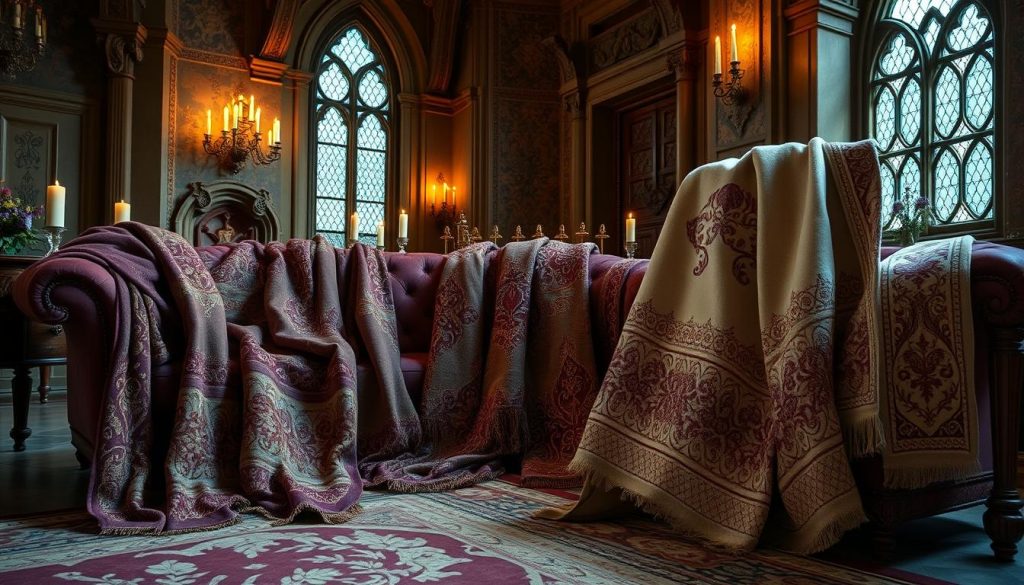
Medieval towels were often given as gifts to guests. This showed their importance in social events. The quality of the towels showed the host’s hospitality and status.
“A fine towel in a medieval home was akin to displaying a masterpiece of art today.”
Towels were used in many ways in medieval times. They were used in religious ceremonies, decorated dining tables, and even as wall hangings. This showed their value and versatility in daily life.
When you look into the history of bath linens, remember towels from medieval times were key. They changed from simple cloths to symbols of luxury. This change still affects how we see and use towels today.
The Impact of the Industrial Revolution on Towel Production
The Industrial Revolution changed towel making a lot. It moved from making things by hand to making lots of them quickly. This changed the textile world a lot.
Introduction of Power Looms
Power looms changed how we make textiles. These machines, made in the late 1700s, made weaving faster. They could make fabric quicker than hand looms, leading to more towels.
The Spinning Jenny, made by James Hargreaves in 1764, spun eight threads at once. This made making yarn much faster.

Mass Production and Increased Accessibility
Towels became easier for everyone to get. Before, towels were for the rich. But with new ways to make them, they became cheaper for more people.
This made everyone cleaner and healthier.
The Rise of Cotton as a Preferred Material
Cotton towels became the favorite during this time. The Industrial Revolution made cotton easier to grow. Cotton is good for towels because it soaks up water well and lasts long.
The cotton gin, made in 1793, made cotton easier to process. This made cotton towels even more popular.
The Industrial Revolution turned towel making into a big industry. This made towels cheaper and better. It also made more kinds of towels available. Today, we have many kinds of bath towels because of this change.
The Invention of Terry Cloth: A Game-Changer
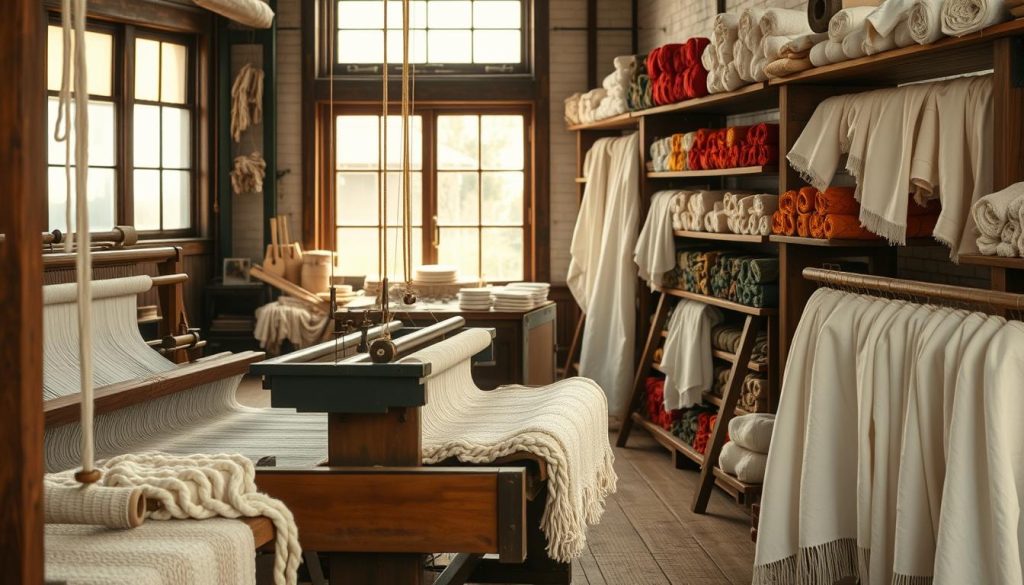
The terry cloth invention changed towel history forever. It brought comfort and function to our daily lives. This fabric has loops on both sides, making it super absorbent.
So, why did terry cloth become so loved? It’s because it absorbs water well and feels soft. It quickly became a favorite in homes, replacing old towels.
Terry cloth has a special design. It has two warp beams, one for the base and one for the loops. This makes it great at drying, absorbing up to 27 times its weight in water.
“Terry cloth revolutionized our daily routines. It’s hard to imagine life without these soft, fluffy towels now.”
Now, you can find terry cloth towels in many styles and qualities. Some are made from 100% Turkish Organic Cotton, certified by GOTS. These towels are not only soft but also last long. Many are now made in eco-friendly ways, too.
The History of Bath Towels: A Journey Through Time
The history of bath towels is long, showing changes in culture, technology, and daily life. They have been important for hygiene and comfort for thousands of years. From ancient Egypt to today, towels have evolved a lot.
From Ancient Cloths to Modern Marvels
In ancient Egypt, around 5000 BC, people used linen cloths for bathing. These towels were used for cleaning and in religious rituals. The Romans and Greeks also used towels in their baths, starting a tradition that would grow.
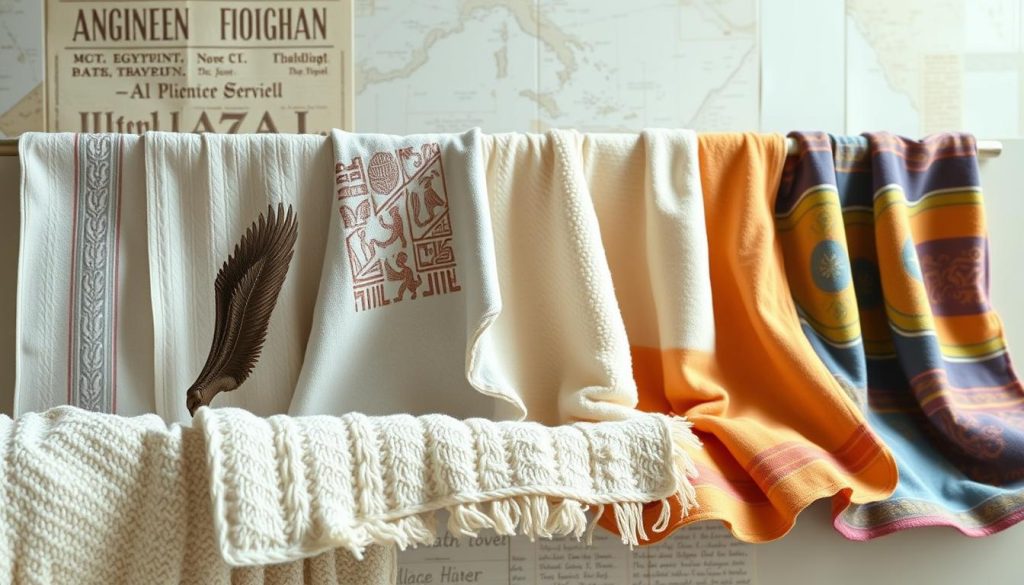
Cultural Significance Across Centuries
Towels have always meant a lot to people. In 17th-century Turkey, they were used for special baths. Turkish hammam towels, known for being light and absorbent, showed the skill of handweaving.
Today, towels still show luxury, hospitality, and cleanliness in many cultures.
Technological Advancements in Towel Manufacturing
The Industrial Revolution changed how towels were made. New ways to make them made them cheaper and more available. Terry cloth, with its special fabric, made towels better at soaking up water.
Now, we have towels made from bamboo and microfiber, meeting different needs and caring for the planet.
“The future of towel design is expected to focus on sustainability and innovation, with a growing emphasis on eco-friendly materials and advanced manufacturing techniques.”
Looking ahead, the story of bath towels keeps going. From simple cloths to today’s advanced towels, they show our ongoing search for comfort, cleanliness, and care for the environment.
The Evolution of Towel Materials
Towel materials have evolved a lot since ancient times. From simple linen cloths to modern absorbent fabrics, it’s a fascinating journey. It shows how towels have changed to meet our needs for comfort and sustainability.
Cotton has always been a top choice for towels. It’s naturally absorbent and soft, making it great for drying off. But, new materials like bamboo and eucalyptus are now available. They are eco-friendly and gentle on your skin.
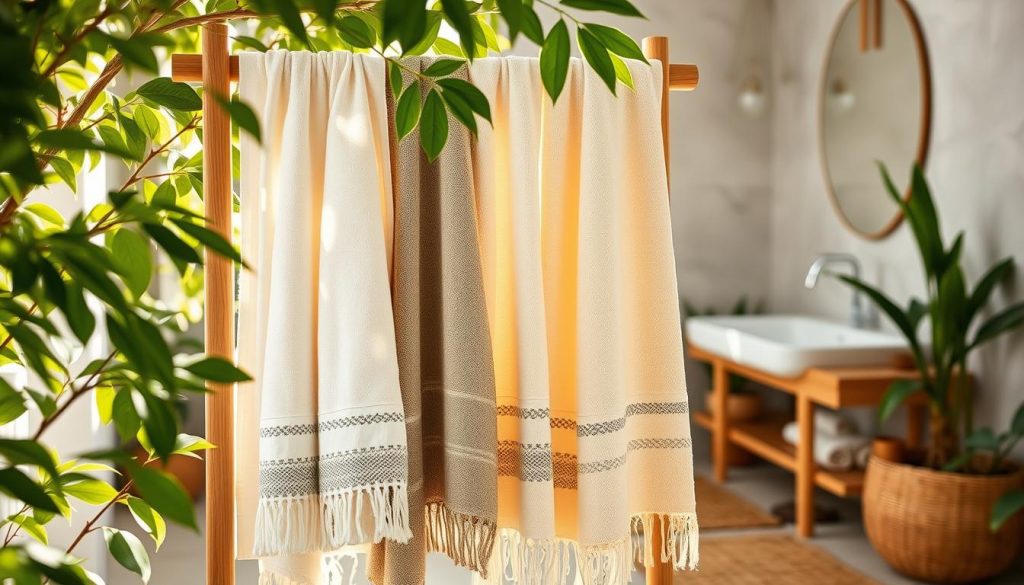
Microfiber towels are now popular for their quick-drying nature. These synthetic fabrics are light and compact, perfect for travel. Some towels mix different fibers, like cotton and bamboo, for the best qualities.
The best towels are those that feel good and do good for the environment.
Looking ahead, sustainable towel materials are key. Brands are finding new ways to make towels that are good for the planet. Options include recycled materials and organic cotton, great for eco-conscious shoppers.
The evolution of towel materials is ongoing. Every year, we see new improvements in absorbency, durability, and environmental impact. When you buy towels, think about how far they’ve come. Choose materials that match your values.
Towels in Different Cultures: A Global Perspective
Towels are important in many cultures worldwide. They show traditions and customs of each place. Let’s look at some global towel traditions that show the variety in design and use.
Turkish Hammam Towels
Turkish hammam towels, or peshtemals, are a key part of Turkish culture. These towels are made to be light and absorbent. They are used in Turkish baths and are loved around the world.

Japanese Tenugui
In Japan, tenugui are thin, hand-dyed towels. They are used as hand towels, headbands, and even gifts. Their designs often show traditional Japanese patterns, making them both useful and beautiful.
Indian Gamcha
The Indian gamcha is a cotton towel with many uses. It’s used to dry off after a bath and even to protect from the sun. Its light weight is perfect for India’s hot and humid weather.
These global towel traditions show how cultures have made towels their own. The variety in designs and uses worldwide shows human creativity and cultural adaptation.
The Rise of Luxury Bath Linens
Luxury bath linens have changed how we experience the bathroom. Today, high-end towels add elegance and comfort to our daily lives. The journey of luxury towel brands started with a focus on top materials and skill.
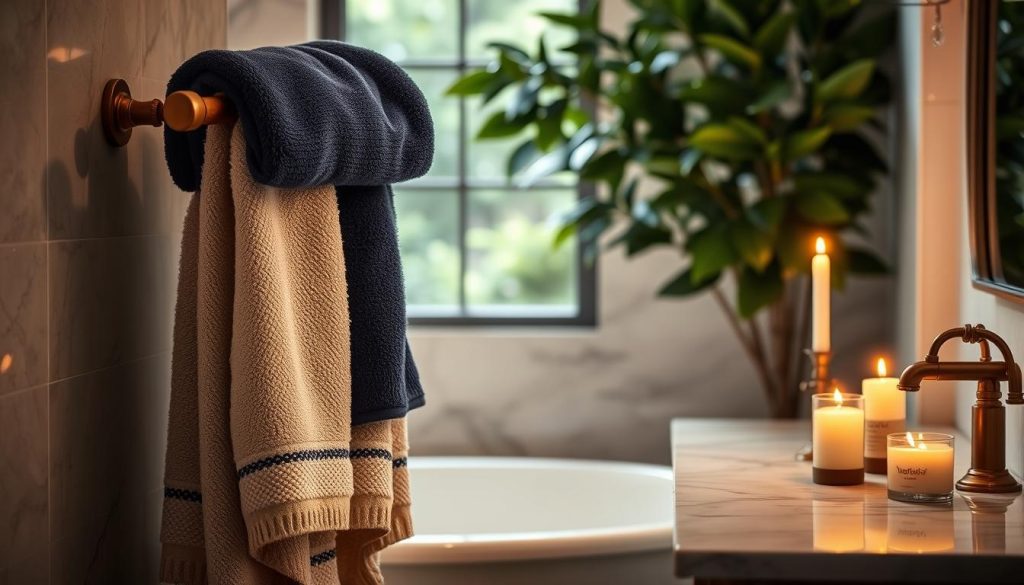
Egyptian cotton, with its long fibers, is a symbol of luxury bath linens. It’s incredibly soft and absorbs water well. But, other materials like Turkish cotton, Pima cotton, and Suvin cotton are also popular.
Brands like Reed Family Linen, founded in 1852, lead in quality. Their towels, weighing 650GSM, are both soft and long-lasting. The special weaves and cotton quality make them stand out.
“A great bath towel is like a warm hug after a long day.”
The demand for luxury bath linens shows our desire for better bathroom experiences. Each towel, from bath sheets to hand towels, is made with care. The unique weaves and materials make them feel like a spa in your home.
Innovative Designs: Beyond Basic Bath Towels
The world of bath towels has changed a lot. Now, they meet many different needs and tastes. This shows how much the industry cares about new ideas and usefulness.
Hooded Towels for Children
Parents adore hooded towels for their kids. They mix fun with function, with cute animal designs. These towels keep kids cozy and dry, making bath time more fun.
Microfiber Travel Towels
Travelers will love microfiber towels. They’re light, small, and dry fast. You can take them anywhere without using up too much space.
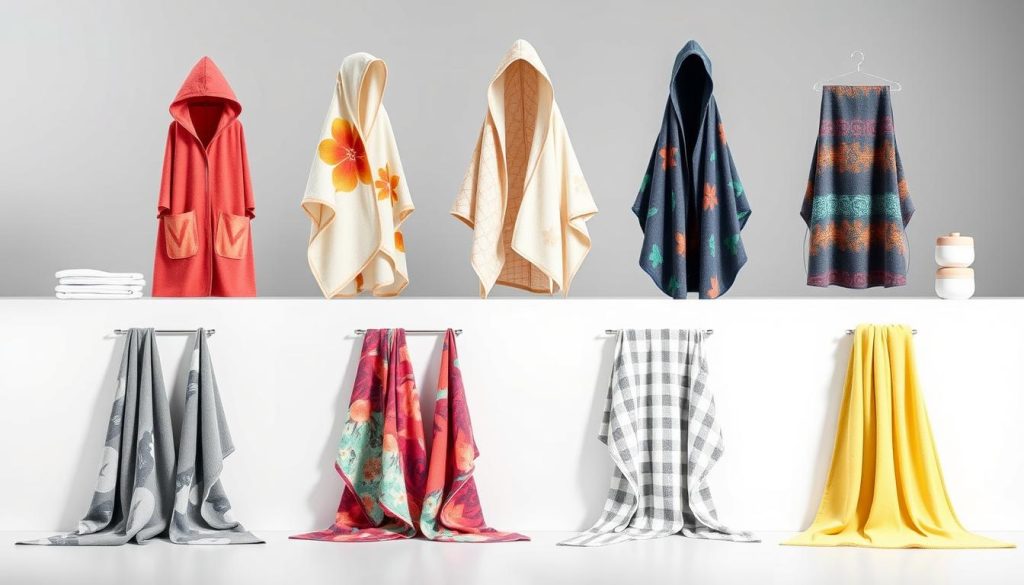
Oversized Beach Towels
Beach fans will love big beach towels. They cover a lot of space and look great. Some even have pockets for your things.
Towel design keeps getting better. You can find towels that kill germs, dry fast, and hang easily. These show how towels are getting more versatile and innovative.
“Towels today feature a wide array of patterns, textures, and colors, catering to diverse tastes and preferences.”
The towel industry is always improving. Soon, we’ll see towels made from eco-friendly materials and made with new tech. The future of bath towels looks bright, with a focus on comfort, usefulness, and caring for the planet.
The Role of Towels in Hygiene and Self-Care Practices
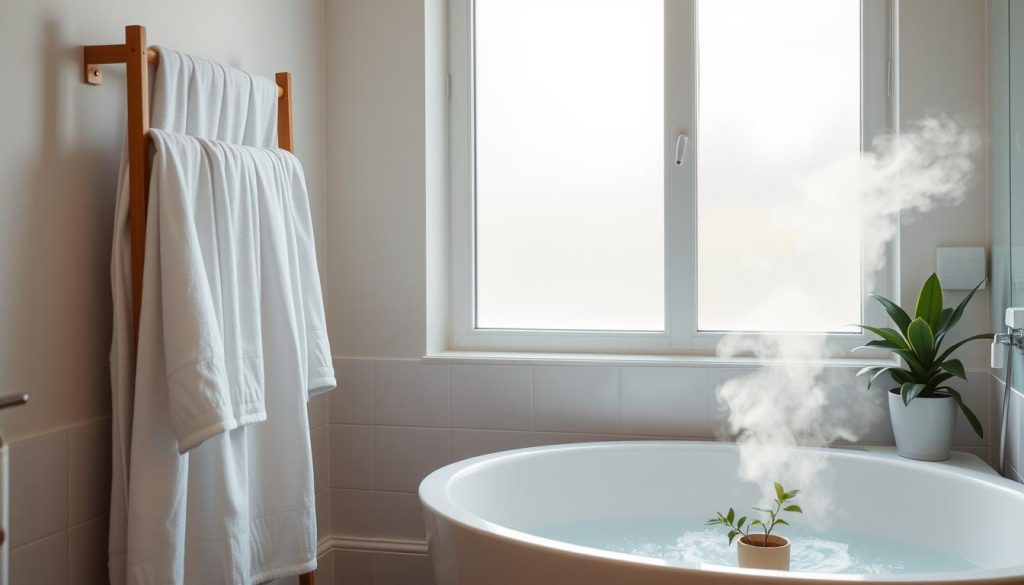
Towels are key in keeping you clean every day. They help keep you healthy and happy. Whether it’s drying off or cleaning your hands, towels are a big part of your routine.
Recently, people have started to value good towels more. Soft towels make you feel pampered and dry you well. This shows how important comfort and wellness have become.
Keeping towels clean is vital for your health. Washing them often stops bacteria from growing. This is why hospitals have strict rules for towel cleaning. They want to keep patients safe.
“Proper skin hygiene can lead to reduced incidence of skin breakdown, preventing costly treatment, prolonged hospital stays, and patient discomfort.”
Your skin is like a shield against germs. Using clean towels helps it do its job better. As you get older, your skin needs extra care to stay healthy.
Using towels in your self-care routine is more than just cleaning. Luxurious towels in spas make you feel relaxed. As self-care grows, so does the importance of clean, nice towels.
Sustainable Towel Production: Eco-Friendly Materials and Methods
The towel industry is moving towards sustainable production to help the environment. Now, you can find many eco-friendly towel materials. They offer both comfort and conservation.
Organic Cotton Towels
Organic cotton towels are a top pick for those who care about the planet. They’re made without harmful chemicals, so they’re good for your skin and the earth. Making these towels uses less water and energy than regular cotton farming.

Bamboo Fiber Towels
Bamboo fiber towels are a green and biodegradable choice. Bamboo grows fast, needs little water, and no pesticides. These towels are very soft and soak up water well. Mixing cotton with bamboo makes towels that are soft on you and the planet.
Recycled Material Towels
Recycled material towels cut down on waste and save resources. They’re made from old fibers, giving them a new life. They’re a soft and sustainable choice.
More people are choosing eco-friendly towels. This change is because of growing awareness. Towel makers are using less water and energy. They’re also focusing on better packaging and shipping to reduce harm to the environment.
“By choosing sustainable towels, you’re not just wrapping yourself in comfort – you’re embracing a cleaner, greener future.”
Towel Manufacturing Techniques: From Hand-Woven to High-Tech
Towel making has changed a lot. It used to be done by hand, but now it’s high-tech. This change has made the textile world better, allowing for more towels while keeping quality high.
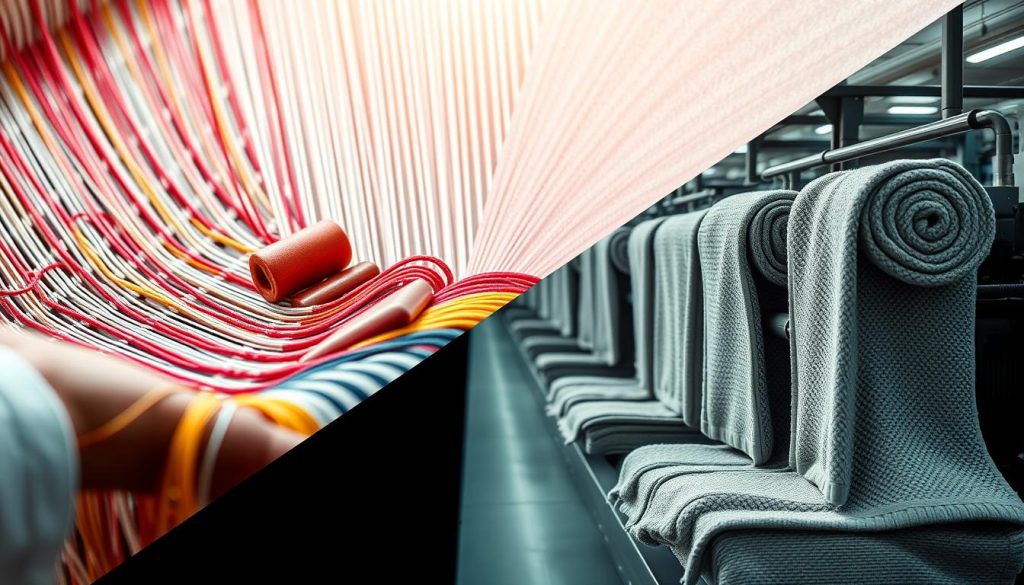
Oldly, artisans made towels on manual looms. This method is still used for special towels like Turkish hammam towels. Now, machines do most of the work. They weave patterns and cut towels to the same size.
New materials have come into play. Cotton is still a favorite for its softness. But now, we also have microfiber and bamboo. These are good for the planet and dry fast.
Modern towels get special treatments to make them better. These treatments make towels absorb more water and feel softer. Some towels can even hold up to 3 liters of water, making them very soft and useful.
“The right manufacturing technique can transform a simple piece of fabric into a luxurious bath experience.”
As towel making gets better, we’ll see even more amazing towels. Soon, we’ll have towels that soak up lots of water and towels that keep sand off. The future of bath towels is exciting and full of new ideas.
The Science of Absorbency: What Makes a Great Bath Towel?
When you’re looking for bath towels, knowing about absorbency is crucial. The key is the GSM of towels, or grams per square meter. This shows how thick and good at soaking up water a towel is. Top bath towels usually have a GSM between 300 and 900.
The type of fibers in towels also matters a lot. Long-staple cotton is great because it pulls water away quickly. Some towels mix cotton with bamboo viscose to get even better. For example, a top towel has 60% cotton and 40% bamboo viscose, with a GSM of 600.

The way a towel is woven also impacts how well it dries. Terry cloth has more room for water, while waffle weaves dry faster. A towel with both waffle and terry knit is soft and works well.
“A great bath towel isn’t just about high GSM. It’s the perfect blend of absorbency, softness, and quick-drying ability.”
Just because a towel has a high GSM doesn’t mean it’s the best. Some towels with a GSM of 550 are actually more satisfying than those with 800 GSM. Your perfect towel depends on what you like most: texture, drying speed, or lasting quality.
Towels in Popular Culture and Art
Towels have become a big part of our culture, art, and literature. They are more than just something to dry off with.
Towels in Literature and Film
In science fiction, towels have become famous. Douglas Adams’ “The Hitchhiker’s Guide to the Galaxy” made them key for space travel. This idea led to Towel Day on May 25th, where fans carry towels to celebrate.
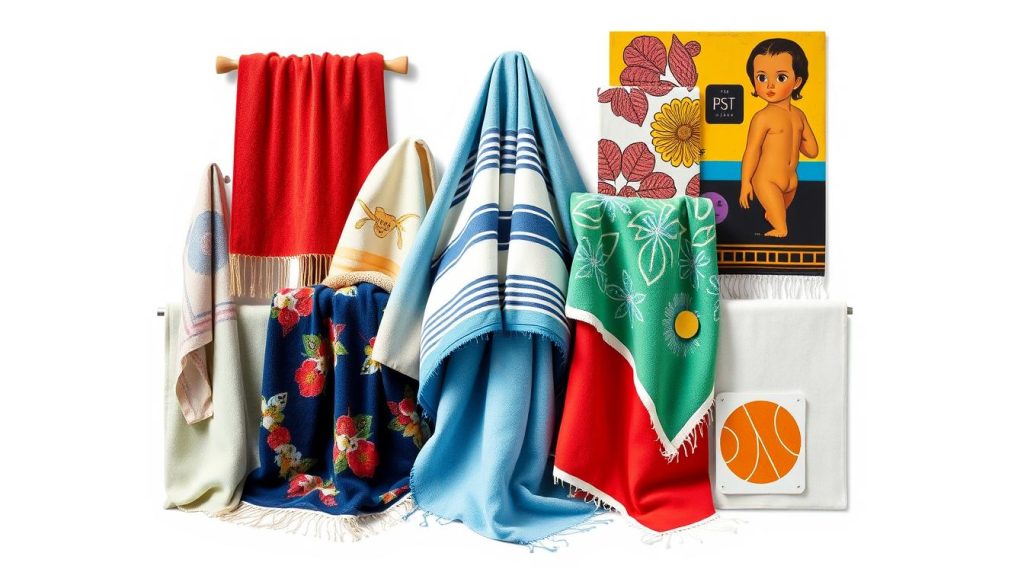
Towel Art and Origami
Hotels now use towels to surprise guests with animal or flower designs. This trend has also inspired people to make towel origami at home. You can find tutorials online to make your own towel creations.
Towels as Collectibles
Yes, people collect towels! Some gather vintage or unique designs. Brands like Baserange even offer high-end towel collections. Towels are also used in art to explore themes of home and everyday life.
“A towel is about the most massively useful thing an interstellar hitchhiker can have.” – Douglas Adams
Towels have left a mark in our culture, from being useful to being art. Next time you use a towel, think about the pop culture history it holds.
The Future of Bath Towels: Innovations on the Horizon
The future of bath towels is exciting. New towel innovations are coming, making these everyday items high-tech. Smart towels with sensors and temperature control are being developed. They aim to make your bath time more comfortable and efficient.
Nanotechnology is leading to towels that clean themselves and dry fast. These changes will save you time and effort. Also, there’s a focus on using eco-friendly materials and methods, pleasing those who care about the environment.
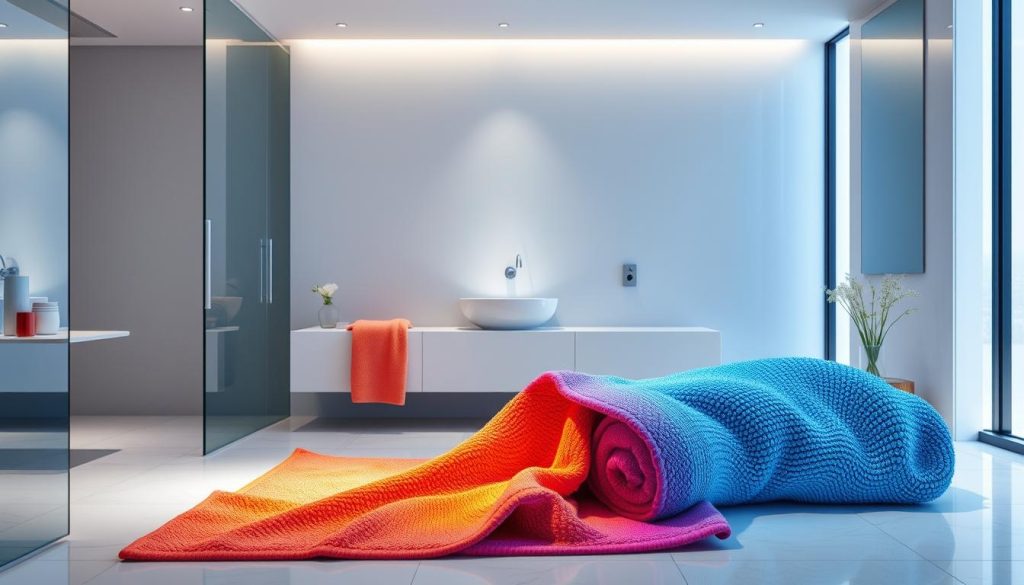
Multifunctional towels are also on the way. Imagine a towel that dries you and does more. As people’s needs change, towels might get even more useful, changing how we use them.
In 2023, there was a big move towards upgrading bath towels after many remodels. This shows people want better everyday items. It’s a good sign for smart towels to become a big part of our homes.
The future of bath towels looks bright. With new tech and eco-friendly materials, towels will become a key part of your bathroom. They promise to make your bathing experience better than ever.
Closing Thoughts
The journey of bath towels has been amazing, showing how our needs and technology have grown. From ancient Egyptian linen to today’s advanced fabrics, towels have become more than just for drying. They now symbolize luxury, personal style, and good hygiene.
Recent tests have shown how towels have improved. For example, Frontgate’s Resort Cotton Bath Towel soaked up 97.5% of water. This shows big progress in towel absorbency. The future looks bright with quick-dry and eco-friendly towels becoming more popular.
Towels mean more than just drying us off. Brands like Brooklinen and Matouk offer soft, absorbent towels. Others focus on drying fast. As we move forward, towels will keep changing to fit our lives and the planet. Whether you like the light feel of waffle weaves or the softness of Egyptian cotton, there’s a towel for everyone.

